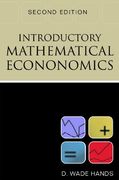Question
Constants A slender, uniform metal rod of mass M and length l is pivoted without friction about an axis through its midpoint and perpendicular to
Constants
A slender, uniform metal rod of mass M and length l is pivoted without friction about an axis through its midpoint and perpendicular to the rod. A horizontal spring, assumed massless and with force constant k, is attached to the lower end of the rod, with the other end of the spring attached to a rigid support.
Part A Part complete We start by analyzing the torques acting on the rod when it is deflected by a small angle θ from the vertical. Consider first the torque due to gravity. Which of the following statements most accurately describes the effect of gravity on the rod? Choose the best answer. SubmitPrevious AnswersRequest Answer Correct Assume that the spring is relaxed (exerts no torque on the rod) when the rod is vertical. The rod is displaced by a small angle θ from the vertical. Part B Part complete Find the torque τ due to the spring. Assume that θ is small enough that the spring remains effectively horizontal and you can approximate sin(θ)≈θ (and cos(θ)≈1 ). Express the torque as a function of θ and other parameters of the problem. In this context, the torque will be a 1D vector; therefore, your equation must correctly express the relationship between the direction of torque and the direction of any other 1D vectors within your equation. View Available Hint(s)
SubmitPrevious AnswersRequest Answer Correct Since the torque is opposed to the deflection θ and increases linearly with it, the system will undergo angular simple harmonic motion. Part C Part complete What is the angular frequency ω of oscillations of the rod? Express the angular frequency in terms of parameters given in the introduction. View Available Hint(s)
SubmitPrevious AnswersRequest Answer Correct Note that if the spring were simply attached to a mass m , or if the mass of the rod were concentrated at its ends, ω would be k/m−−−−√ . The frequency is greater in this case because mass near the pivot point doesn't move as much as the end of the spring. What do you suppose the frequency of oscillation would be if the spring were attached near the pivot point? Part D Part complete Find the frequency of oscillation if the spring is connected 1/6 of the way from the pivot to the end of the rod (the spring is still horizontal as in the figure, but the pivoted rod has been moved downwards in the figure so that the distance from the pivot to the point of attachment is only 1/6 of the distance from the pivot to the end of the rod).Take the spring constant k = 170 N/m , the length of the rod l = 140 cm , and the mass of the rod M = 190 grams . Give your answer in Hertz.
SubmitPrevious AnswersRequest Answer Incorrect; Try Again; 7 attempts remaining
| ||||||||||||||||||||||
Step by Step Solution
There are 3 Steps involved in it
Step: 1

Get Instant Access to Expert-Tailored Solutions
See step-by-step solutions with expert insights and AI powered tools for academic success
Step: 2

Step: 3

Ace Your Homework with AI
Get the answers you need in no time with our AI-driven, step-by-step assistance
Get Started


